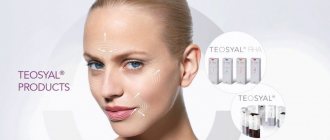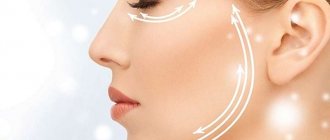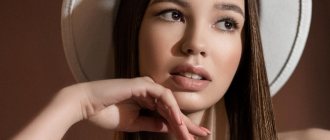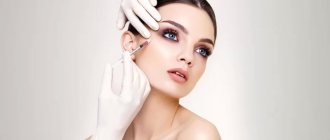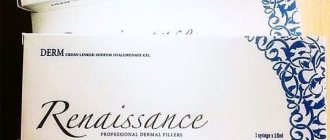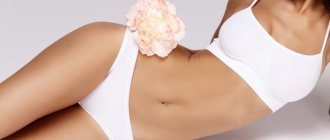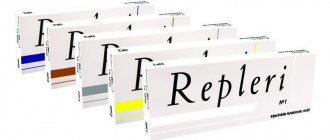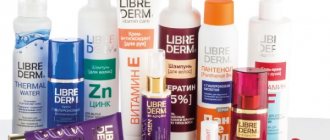We are talking with dermatocosmetologist, surgeon, candidate of medical sciences, certified trainer in injection techniques, founder of an independent training school Natalia Shkolyar and cosmetologist, scientific consultant of the 1nep.ru portal Ekaterina Glagoleva .
Advertising happily assures us: both mesothreads and fillers successfully fight wrinkles, strengthen the skin framework, and provide a lifting effect (it is the last promise that attracts consumers the most). However, according to Natalya Shkolyar, it is completely wrong to identify their actions.
- The action of fillers is aimed at increasing volume: with their help, you can restore the youthful roundness of the cheeks and cheekbones, and even out the oval of the face. And fill the defects of the dermis - wrinkles and folds.
- With the help of mesothreads lying freely in the skin, a kind of bioreinforcement occurs. A needle with an attached thread is passed through the subcutaneous layer along certain vectors, after which it is removed, but the thread remains, and when absorbed, a collagen “framework” is formed around it.
There is a real confrontation between fillers and threads. In the heat of competition, they are ascribed advantages that are far from reality. Both methods are surrounded by many myths. In such a situation, it is very difficult for the consumer to make the right choice!
MYTH 1: The introduction of mesothreads and fillers rejuvenates the skin.
According to Natalya Shkolyar , this is one of the most dangerous misconceptions that most aesthetic medicine specialists are trying to introduce into our consciousness. Alas, no biological rejuvenation of the skin occurs. From the point of view of medicine in general and surgery in particular, the desired lifting effect is based on trauma to the soft tissues of the face, without visible marks on the skin. And recovery follows the principle of wound healing. When threads and fillers are introduced, the skin is damaged, soft elastic “micro-scars” appear inside, which contribute to a change in its optical density. As a result, the patient sees in the mirror that he begins to look younger.
In fact, the biological process of skin aging does not slow down, and sometimes accelerates (if an inexperienced specialist violates the administration technique or the patient does not follow the doctor’s recommendations).
Nowadays, all forced “rejuvenating” manipulations are increasingly presented as improving a person’s health. This does not add respect to people who mislead patients.
Ekaterina Glagoleva:
“As such, true skin rejuvenation does not occur when implanting threads made of smooth suture material. As soon as the technique appeared, many manufacturers assured that a thread of smooth suture material was placed in the middle layers of the skin and, due to the constant irritating effect, collagen synthesis processes were started. At the moment, the term “subdermal introduction of mesothreads” is increasingly heard, namely they are located in the hypodermis (subcutaneous fatty tissue), and we are no longer talking about synthetic processes of the dermal matrix.
Fillers based on hyaluronic acid have recently followed the path of evolution and combine stabilized acid to recreate volumes and unstabilized hyaluronic acid, which acts as a biorevitalizant. In this case, I rather began to talk about skin rejuvenation.”
Preparation for the procedure
No action is required from the patient before Radiesse injections. There is no need to change your usual lifestyle. The only thing that can be done is to stop drinking alcohol on the eve of the procedure and limit the intake of blood thinning medications (by the way, these include the popular aspirin).
On the day of the procedure, do not overuse coffee, try to get a good night's sleep. Radiesse does not require a long recovery period, but if possible, it is worth rescheduling appointments to the next day and ensuring yourself a relaxing rest after visiting a cosmetologist.
MYTH 2: Compared to fillers, mesothreads provide a greater skin tightening effect.
Natalya Shkolyar's opinion:
“To some extent this is true. When fillers are injected, the skin is smoothed by filling the volume lost with age, which at the same time contributes to its “tension”. With biorevitalization (point injection of gel), the skin also slightly lifts. Smooth absorbable mesothreads reinforce the fabric. Introduced into the skin, they create a kind of mesh in it, around which, when absorbed, collagen and elastin fibers, which have become chaotic and stretched with age, “twist”. They reduce their length, and the patient feels the skin tightens and becomes more elastic. However, this lifting effect is not very great by and large. The skin only “sits” slightly. Mesothreads have no effect on subcutaneous structures—fatty tissue and muscles that have shifted downward (the main cause of age-related ptosis). For these purposes, non-absorbable and absorbable deep insertion sutures (smooth or notched) are used, which are attached to bone structures.”
Ekaterina Glagoleva:
“The skin tightening effect is provided by threads that can be classified as lifting and reinforcing - these are notched threads that are fixed in the tissue and provide true lifting.
Smooth threads provide an indirect lifting effect by creating a frame in the subcutaneous fat and tightening the tissue at the injection sites.”
conclusions
You can compare contour plastic surgery with thread lifting, but you shouldn’t oppose each other. At the initial stages of age-related changes, one technique is often sufficient; for pronounced wrinkles, folds, and ptosis, it is recommended to combine them. Sign up for a consultation at GMTClinic - and a competent cosmetologist will conduct an examination, assess the condition of your skin, and select the best ways to solve existing problems to achieve the best result.
If you need contour plastic surgery or thread lifting, then go to GMTClinic.
MYTH 4: In terms of specific gravity, mesothreads are lighter than fillers. Therefore, they do not aggravate age-related ptosis.
There is some truth to this. Mesothreads are very thin, one tenth of a millimeter in diameter. Thanks to this, they do not stretch, but instead reinforce the fabric. With the constant introduction of fillers into one area (for example, the nasolabial fold), the volume of the injected substance increases each time.
However, to a greater extent, according to Natalya Shkolyar , this is not due to the “sagging” of soft tissues under the weight of the gel, but to the fact that the injected volume is very difficult to control. If the filler is administered by a not very experienced specialist, overcorrection occurs, followed by a not very good aesthetic effect. It can be compared to using cling film. When you stop pulling it, it “shrinks up”. The same thing - alas! - happens to the skin: the so-called optical density of the tissue does not change for the better.
Ekaterina Glagoleva:
“Yes, we always take gravity into account and must remember that when we add weight to already heavy, sometimes swollen tissues, we aggravate the manifestations of gravitational ptosis. And the property of hyaluronic acid to retain moisture also plays a role in making tissue heavier. But injecting a large number of PDO-based threads (smooth threads) can also weigh down the tissue. Everything again comes down to a rational choice of methodology and quantity.”
Opinion of cosmetologists
According to cosmetologists, each method has its own advantages and disadvantages. The decision to choose one or another procedure is the competence of professionals.
The criteria they follow are: the type of age-related changes, the presence of indications and contraindications, skin type, localization of the correction zone.
The algorithm of actions is built depending on the specific situation. Only in this case can the maximum effect be achieved.
Advantages of the methods
Are common:
- correction of age-related skin changes with mesothreads and fillers is atraumatic for the patient (compared to operations);
- During the procedure, no incisions are made on the skin, the pinpoint points where the needles enter heal quickly, leaving no marks;
- there is no (or short) rehabilitation period;
- minimum (compared to operations) time for a procedure, 1 procedure = 45 minutes;
- mesothreads and fillers are ≈90% biocompatible with tissues.
Fillers:
- allow you to create the missing volume;
- fill (even out) even very deep wrinkles and folds;
- promote skin hydration (biorevitalization technology with fillers based on hyaluronic acid).
Mesothreads:
- the tissue reaction to the threads is insignificant, microcirculation disruption is minimized (fillers with overcorrection can cause necrosis - a severe disruption of microcirculation);
- longer lasting aesthetic result.
Contraindications for thread lifting and plastic surgery
Both interventions (facial surgery and skin thread lifting) have common contraindications:
- period of acute infectious or somatic diseases;
- disorders in the blood coagulation system;
- decompensated diabetes mellitus;
- diseases of the heart and blood vessels;
- neoplasms;
- mental disorders;
- some skin diseases;
- period of pregnancy or breastfeeding;
- allergic reactions to anesthesia or materials used during the procedure.
Additional contraindications for face lifting include excess skin tissue, age after 60 years, and excess weight. An additional contraindication for plastic surgery is the tendency of the skin to form keloid scars.
Indications
Almost the same for fillers and mesothreads:
- nasolabial folds, labiomental wrinkles;
- vertical and horizontal wrinkles;
- nasolacrimal groove;
- “purse-string” wrinkles around the lips;
- folds in front and behind the auricle;
- gravitational ptosis of the cheeks;
- eyebrow ptosis;
- folds of skin on the chin, neck, chest;
- sagging tissue on the buttocks, abdomen, arms, legs. (Due to the fairly high price, fillers are usually used in the face and décolleté areas; using threads on the body is cheaper).
- uneven relief of the skin and subcutaneous tissues after liposuction. (Both threads and fillers can be used, but the result from threads is brighter).
What is Radiesse?
Radiesse for face is an injectable preparation.
A unique filler is designed for injection into facial tissue, it allows you to get rid of wrinkles and improve the quality of the skin, and perform lifting without surgery. The drug has been well studied and approved by leading health organizations. According to research, it is absolutely safe: Radiesse filler has been studied by more than 200 scientists and research teams around the world, and over three hundred publications have been published up to 2022 alone. Effective and safe, it allows you to perform vector lifting (bio-reinforcement) and provides instant results that last for a long time. It is fully compatible with the human body and is suitable for correcting the face and neck area at any age after 18 years. Radiesse returns the V-shape to the face - it is what is associated with youth: a narrow chin, wide cheekbones, toned skin. Over time, due to the redistribution of the subcutaneous fat layer, loss of tissue elasticity, age-related changes in ligaments and muscles, the face takes on the shape of an inverted V - the cheeks “sink”, a double chin appears, and the cheekbones lose their expressiveness. In this case, the face looks old and tired, regardless of the number and depth of wrinkles. It is precisely this problem that a volumizer allows you to cope with. Vector lifting Radiesse restores lost volume, stimulates collagen production, and lasts for a long time - from 12-15 months.
How is the procedure performed?
- First of all, a consultation is carried out. The dermatologist collects anamnesis, clarifies allergic reactions, and discusses the patient’s wishes.
- Then the patient lies down on the couch, the remaining makeup is removed from the face, the skin is cleansed and treated with an antiseptic.
- If necessary, anesthesia is provided. As a rule, by application - that is, using ointment or cream. But if you've already had injections in a clinic and know you're immune to a little discomfort during the procedure, your doctor may not administer anesthesia. For the remedy to work, a pause of 15-20 minutes is necessary. Injection anesthesia is sometimes used too.
- The specialist draws a vector grid with a cosmetic pencil, marking the areas of influence of the drug.
- The doctor performing Radiesse contouring opens the sterile packaging of the drug in front of you, shows the series, number and expiration date.
- The next stage is the direct injection of the drug into the injection zones. The doctor can do this directly with a disposable needle or a flexible cannula - the second option is used if it is necessary to distribute a large volume of Radiesse in the facial tissues. A cannula is a blunt-ended needle that has a rounded hole. The shape allows the cannula to easily penetrate deep into the tissue and minimize trauma to blood vessels.
- After completing the Radiesse lift, the face is again treated with antiseptic agents, and a special healing cream is applied to the skin.
At Cleo Line, Radiesse vector lifting is performed by cosmetologists and dermatologists with higher education who have extensive experience and constantly improve their knowledge and skills in advanced training courses. By contacting us, you trust your beauty and safety to professionals.
